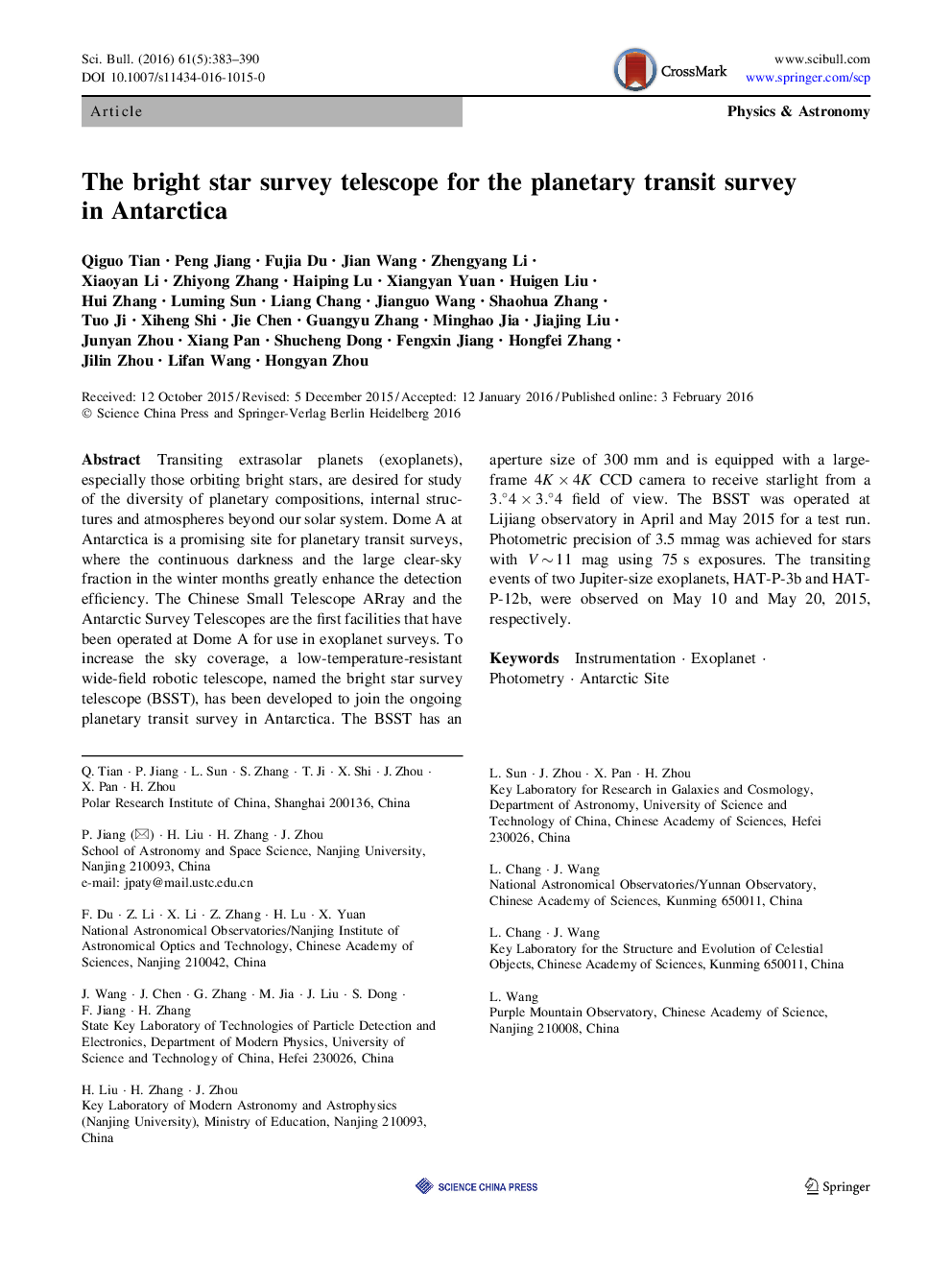| Article ID | Journal | Published Year | Pages | File Type |
|---|---|---|---|---|
| 5789080 | Science Bulletin | 2016 | 8 Pages |
Abstract
Transiting extrasolar planets (exoplanets), especially those orbiting bright stars, are desired for study of the diversity of planetary compositions, internal structures and atmospheres beyond our solar system. Dome A at Antarctica is a promising site for planetary transit surveys, where the continuous darkness and the large clear-sky fraction in the winter months greatly enhance the detection efficiency. The Chinese Small Telescope ARray and the Antarctic Survey Telescopes are the first facilities that have been operated at Dome A for use in exoplanet surveys. To increase the sky coverage, a low-temperature-resistant wide-field robotic telescope, named the bright star survey telescope (BSST), has been developed to join the ongoing planetary transit survey in Antarctica. The BSST has an aperture size of 300 mm and is equipped with a large-frame 4K à 4K CCD camera to receive starlight from a 3.°4 à 3.°4 field of view. The BSST was operated at Lijiang observatory in April and May 2015 for a test run. Photometric precision of 3.5 mmag was achieved for stars with V ~11 mag using 75 s exposures. The transiting events of two Jupiter-size exoplanets, HAT-P-3b and HAT-P-12b, were observed on May 10 and May 20, 2015, respectively.
Keywords
Related Topics
Physical Sciences and Engineering
Chemistry
Chemistry (General)
Authors
Qiguo Tian, Peng Jiang, Fujia Du, Jian Wang, Zhengyang Li, Xiaoyan Li, Zhiyong Zhang, Haiping Lu, Xiangyan Yuan, Huigen Liu, Hui Zhang, Luming Sun, Liang Chang, Jianguo Wang, Shaohua Zhang, Tuo Ji, Xiheng Shi, Jie Chen, Hongyan Zhou,
